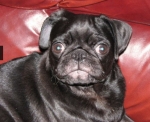I have been on the S9 for a couple of weeks now and really like it over the S8. I notice much fewer hypopnea events and I have kept my total apnea events to about 6 per night. These 6 are all central events; last night I even went 7 hours before I had a slew of events late in the morning before I woke up. Are 6 events per night acceptable or should I tweak the machine and go for fewer? I spoke with a sleep doc and he told me that if the machine is working for me than, even though I was diagnosed with central apnea - it is probably obstructive with a few centrals mixed in which is often normal? I have been using the autoset at 7.8 and 9.2 the machine seems to like about 8.5 but will go between the min and max throughout the night.
Thanks,
JG
NEW S9
- chunkyfrog
- Posts: 34545
- Joined: Mon Jul 12, 2010 5:10 pm
- Location: Nowhere special--this year in particular.
Re: NEW S9
Additional pressure is much more likely to CAUSE centrals.
Pressure only helps with obstructive related events.
Six events is not serious unless they were excessively long.
Their cause could be related to arousal ahead of your alarm.
Pressure only helps with obstructive related events.
Six events is not serious unless they were excessively long.
Their cause could be related to arousal ahead of your alarm.
_________________
| Mask: AirFit™ P10 For Her Nasal Pillow CPAP Mask with Headgear |
| Additional Comments: Airsense 10 Autoset for Her |
Re: NEW S9
They were 10-15 seconds long and the pressure was at the high limit during the event. I don't know if the event triggered the increased pressure or if the event triggered the increase in pressure?
Re: NEW S9
When the cpap/apap machine is in auto adjusting pressure mode it will not increase the pressure in response to central apneas at all under any circumstances. More pressure won't fix a central apnea situation because the airway is already open.
So if a pressure increase is seen at some time close to a central apnea flag it is because of some other obstructive factor (obstructive airway collapse warning sign) that has triggered the increase in pressure...and those warning signs are snores, flow limitations or what it senses at the end of the obstructive apnea event.
It won't try to fix an obstructive apnea immediately when it flags one..it can't blow through the obstruction from the collapse of the airway tissues. Instead it waits until that collapse has resolved itself and then it tries to figure how how to better prevent such a collapse happening again and it does that by evaluation the airway after the fact.
This is why the minimum pressure is so important. The idea is to have a better base pressure that does most of the work holding the airway open and when a collapse happens because the pressure needs to be more then the pressure can get to where it needs to be quickly enough. These machines don't go from 6 cm to 15 cm in the blink of an eye.
Ideally what we would see with the machine in APAP mode would be variations in pressure (hopefully not wild variations) and a minimal number of event flags because then we know the machine was able to increase the pressure in response to whatever if was responding to and prevent the collapse from ever happening to the point it gets flagged.
It's an unrealistic expectation to think we can prevent all apnea events. Some are going to happen no matter what pressure we might use or we would maybe have to use a whole lot more pressure all night and who wants to do that.
Now a few people do manage to have those elusive 0.0 AHI nights but to have it as the all inclusive goal to work towards is unrealistic.
6 events over the entire night...I would be doing the happy dance for sure.
If those events were predominately flagged as centrals there's nothing you can do about them...more pressure won't prevent them because the airway is already open. Having a few centrals getting flagged is not unusual and doesn't mean that something needs to be fixed.
So if a pressure increase is seen at some time close to a central apnea flag it is because of some other obstructive factor (obstructive airway collapse warning sign) that has triggered the increase in pressure...and those warning signs are snores, flow limitations or what it senses at the end of the obstructive apnea event.
It won't try to fix an obstructive apnea immediately when it flags one..it can't blow through the obstruction from the collapse of the airway tissues. Instead it waits until that collapse has resolved itself and then it tries to figure how how to better prevent such a collapse happening again and it does that by evaluation the airway after the fact.
This is why the minimum pressure is so important. The idea is to have a better base pressure that does most of the work holding the airway open and when a collapse happens because the pressure needs to be more then the pressure can get to where it needs to be quickly enough. These machines don't go from 6 cm to 15 cm in the blink of an eye.
Ideally what we would see with the machine in APAP mode would be variations in pressure (hopefully not wild variations) and a minimal number of event flags because then we know the machine was able to increase the pressure in response to whatever if was responding to and prevent the collapse from ever happening to the point it gets flagged.
It's an unrealistic expectation to think we can prevent all apnea events. Some are going to happen no matter what pressure we might use or we would maybe have to use a whole lot more pressure all night and who wants to do that.
Now a few people do manage to have those elusive 0.0 AHI nights but to have it as the all inclusive goal to work towards is unrealistic.
6 events over the entire night...I would be doing the happy dance for sure.
If those events were predominately flagged as centrals there's nothing you can do about them...more pressure won't prevent them because the airway is already open. Having a few centrals getting flagged is not unusual and doesn't mean that something needs to be fixed.
_________________
| Machine: AirCurve™ 10 VAuto BiLevel Machine with HumidAir™ Heated Humidifier |
| Additional Comments: Mask Bleep Eclipse https://bleepsleep.com/the-eclipse/ |
I may have to RISE but I refuse to SHINE.
Re: NEW S9
Pugsy, how can we know the point at which centrals cannot be disregarded?
Re: NEW S9
It's not so much which centrals (obviously we can disregard any that are flagged when we know we are awake) but just the number of centrals that we are seeing and when they are occurring.NeedHelp2 wrote:Pugsy, how can we know the point at which centrals cannot be disregarded?
We don't know with any certainty (unless we know for sure we were awake) if the central that gets flagged is sleep onset central, a turn over in bed central or what. We don't have access to all the data that is needed to identify the cause of the "central" because that level of data is not provided with what we have available from the cpap machine.
A large number of centrals and associated desats are of course a potential problem but a few here and there throughout the night are really just a normal part of sleep and/or the sleep stage transitions. A central here and there is no more of a problem than an obstructive apnea here and there. Remember even people without the OSA diagnosis can and will have both obstructive apneas and central apneas. They just don't have enough of them for it to be a problem.
In the past 10 nights my overall central count for the night (not the hourly average) has ranged from 1 to 10.
I have had nights where I had as many as 30 centrals all night. I have noticed that the nights with the higher than usual central count normally seem to go along with nights where my sleep hasn't been as good as other nights and 99.9% of the time it is due to a lot of tossing and turning in bed secondary to pain issues.
So if a person is having a relatively small number of centrals it really doesn't matter what kind of "central" it is because there's not enough of them to matter anyway.
They are a problem if or when the centrals are present in consistently large numbers...all night long, every night or if the oxygen levels drop or if they are repeatedly kicking a person out of sleep onset so that sleep quality is negatively affected.
_________________
| Machine: AirCurve™ 10 VAuto BiLevel Machine with HumidAir™ Heated Humidifier |
| Additional Comments: Mask Bleep Eclipse https://bleepsleep.com/the-eclipse/ |
I may have to RISE but I refuse to SHINE.
Re: NEW S9
Thank you, Pugsy
Re: NEW S9
I was wondering that also as I have a few Centrals show up every night. Man, I'm glad I found this board.
Thank you Pugsy from me also!!
TheWino
Thank you Pugsy from me also!!
TheWino
The wino and I know the joy of the ocean... J. Buffett ***Please do not take any information from my post/s as medical advice. I am simply providing personal experiences. Thank you***










